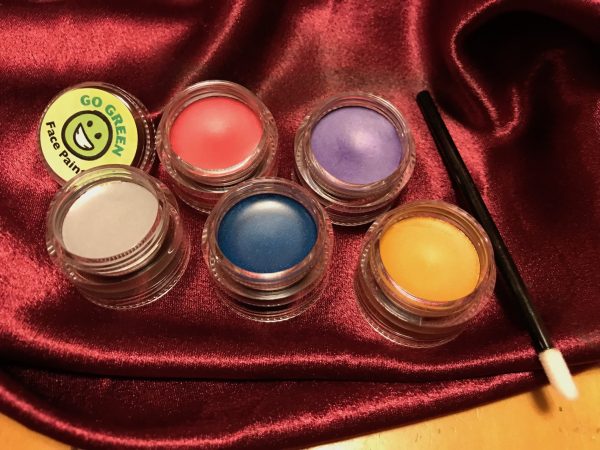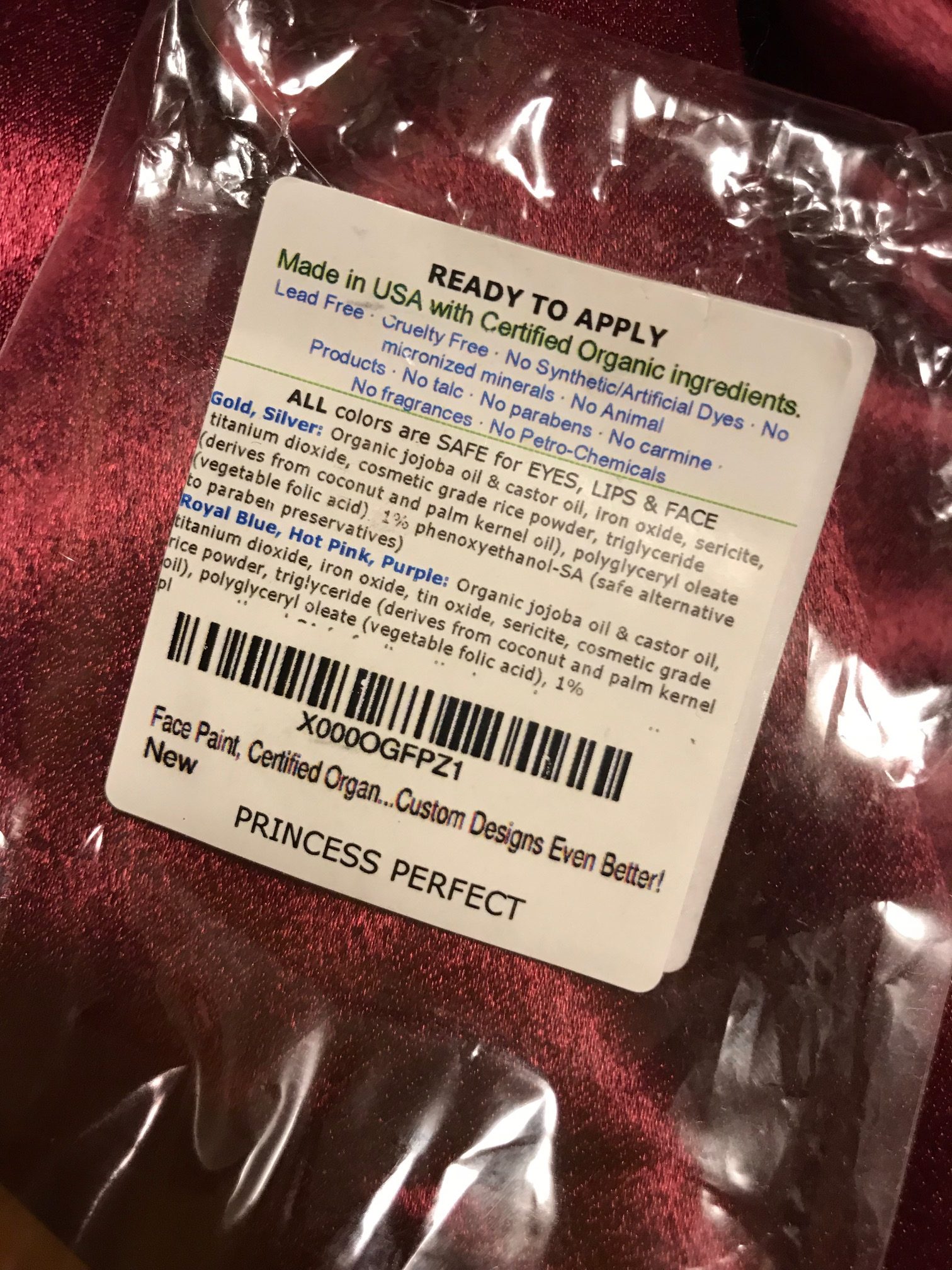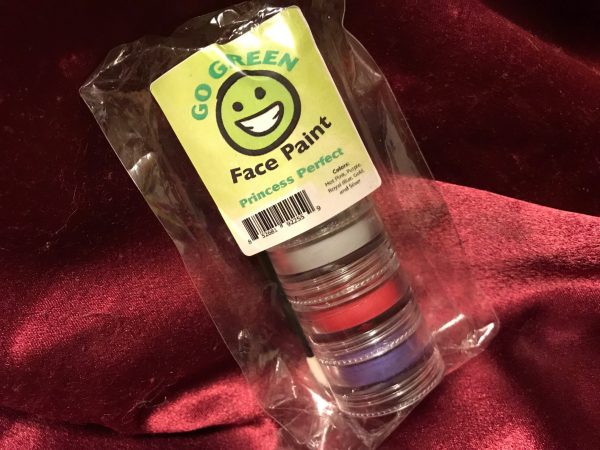This “Go Green” organic face paint is a nice Lead-free option for the kiddos. What brand do you use?
For those new to this website:
Tamara Rubin is a multiple-federal-award-winning independent advocate for childhood Lead poisoning prevention and consumer goods safety, and a documentary filmmaker. She is also a mother of Lead-poisoned children (two of her sons were acutely Lead-poisoned in 2005). Since 2009, Tamara has been using XRF technology (a scientific method used by the U.S. Consumer Product Safety Commission) to test consumer goods for toxicants (specifically heavy metals — including Lead, Cadmium, Mercury, Antimony, and Arsenic). Tamara’s work was featured in Consumer Reports Magazine in February 2023 (March 2023 print edition).
Originally published in December of 2017
Updated September 14, 2019
If you have been a parent for all or some of the past 10+ years as I have, you may have noticed several stories in the news about toxic heavy metals being found in various face paints manufactured and sold for children to use around Halloween (and for other festivals and parties).
While children’s face paints (and other products manufactured and sold expressly for use by children) are fairly strictly regulated these days (2019), the concern today comes more from face paints (and other similar products) that are NOT made “for children” (products that may actually have a warning label that says something like “Not intended for use by children under the age of 13” [or 8, or 16, etc.!]). These are often the face paints that you might see in a Halloween popup outlet store, as the holiday approaches. If there is an age warning on a product like that — it is most likely due to the presence of heavy metal toxicants.
Click here to see more makeup-type products that I have tested.
The Go Green organic “Princess Perfect” face paint (this example is from 2017) pictured here seems to be a good example of a #SaferChoice across the board — especially from a heavy metals perspective.
What were the exact XRF test results for this product?
When tested with an XRF instrument (an expensive scientific tool that relatively instantly detects and lists the metals in the items it is pointed at), all colors from the example pictured (blue, red, silver, gold, and purple) tested negative for Lead (Pb), Mercury (Hg), Arsenic (As), and Cadmium (Cd).
The XRF detects heavy metals down to single-digit parts per million (ppm). There are five face-paint colors in the set pictured here. Interesting to note:
- Purple, Blue, and Red paints from this set tested positive for Tin (Sn) at 781 (+/- 28), 402 (+/- 22), and 458 (+/- 24) ppm respectively. Tin is not considered a toxic heavy metal.
- The Gold and Silver colors each tested positive for Barium (Ba) at 204 (+/- 113) and 146 (+/- 90) ppm respectively.
Each color was tested with the XRF for at least 30 seconds (typically XRF testing is done for something in the range of 30 seconds to 3 minutes per test, depending on the type of item tested). Tests on each color of face paint reported here were repeated multiple times to confirm the levels.
Here’s a link to a similar product from this company on Amazon*.
Takeaway: When shopping for face paints for your children it is super important to choose products that are specifically marketed and sold expressly for use by children (such as this “Go Green” organic product). As a child-specific product, you can at least be assured it meets current regulatory standards for kids.
Are notations that a product is “Made for Children” enough?
The answer to this question is: “Not always.” It is important to realize that there are other ingredients in face paints and similar products that are approved for use in children’s products that can still cause harm — so please exercise caution and read the ingredients for anything you buy for your kids.
As an example: My children are allergic to food dyes (coal tar derivatives), which are often used even in the “safer” face paints. I used red face paint on my son A.J. when he was a toddler (he is 17 years old now) and he had a MASSIVE reaction to the red dye in the face paint! As a young adult, he is still extremely allergic to these food dyes and now has an epi-pen — in case he inadvertently ingests something with red dye and has a severe reaction (in his case, his reaction to red food dye can be life-threatening hives [that can potentially cause his throat to swell closed], so we have to be pretty vigilant).
Our family’s solution: We mostly focus on costumes that do not involve any face paint or makeup of any kind. In the event that one of my children does choose a costume theme that requires makeup, we use the best (least-toxic, highest quality) face paints we can find — and, in most cases, we no longer apply them to our children’s faces but instead, we decorate their arms or other visible body parts (depending on what they are wearing). Arms and shoulders are the most common — and sometimes the backs of their hands! That said, the “Go Green” organic face paints pictured here in this article are ALSO noted to be free of artificial dyes so they are an option for my children to use! (See language on the image of the packaging below.) #WinWinWin!
Please continue reading below the image.
For more #SaferChoices for your family, click here.
If you would like to support this advocacy work (including helping cover the costs of the independent consumer goods testing reported on this website) please consider making a contribution via GoFundMe or PayPal.
Thank you for reading and for sharing our articles.
As always, please let me know if you have any questions!
Tamara Rubin
#LeadSafeMama
*Amazon links are affiliate links. If you choose to make a purchase after clicking one of these links, Lead Safe Mama, LLC will receive a small percentage of what you spend, at no extra cost to you! Thank you!
Never Miss an Important Article Again!
Join our Email List











